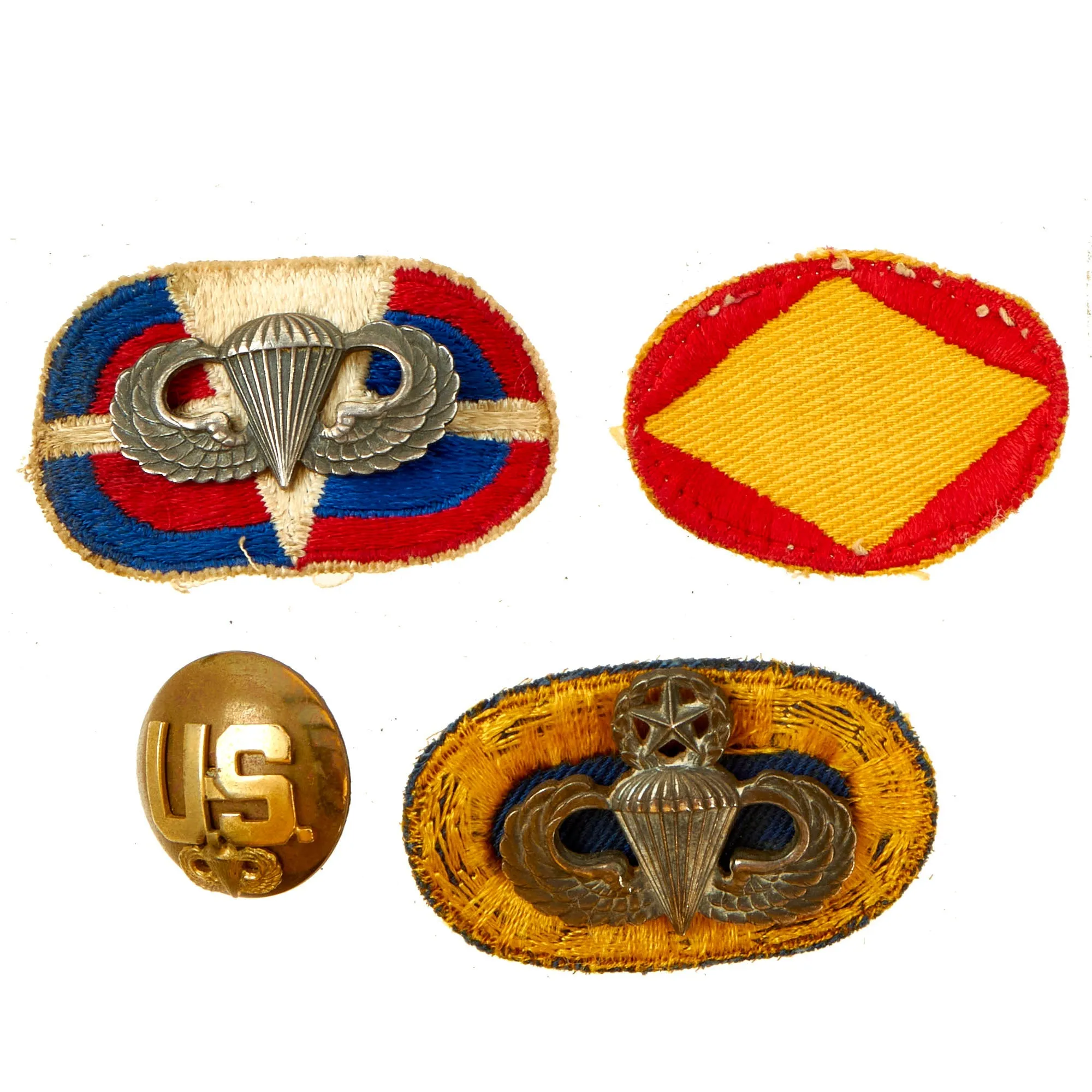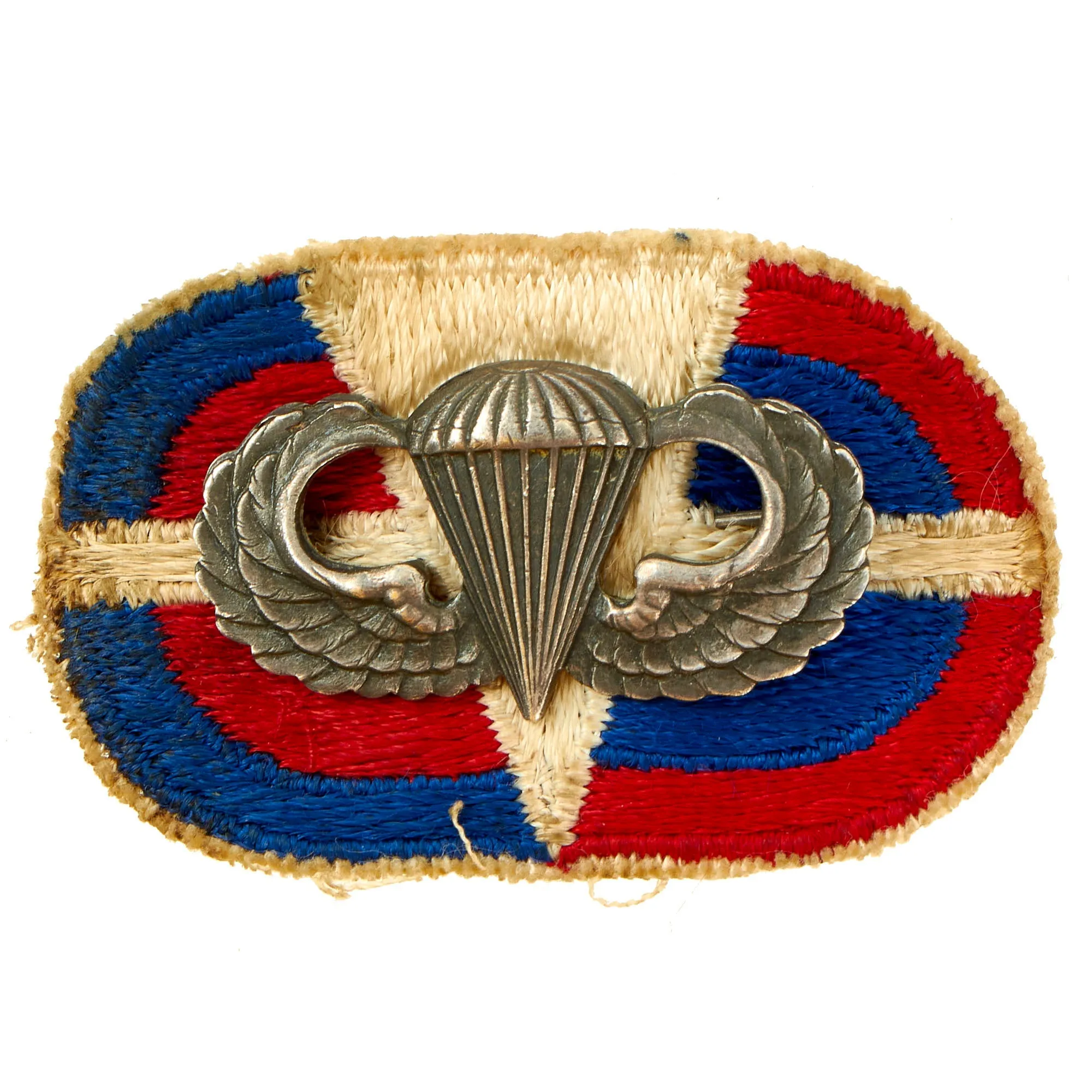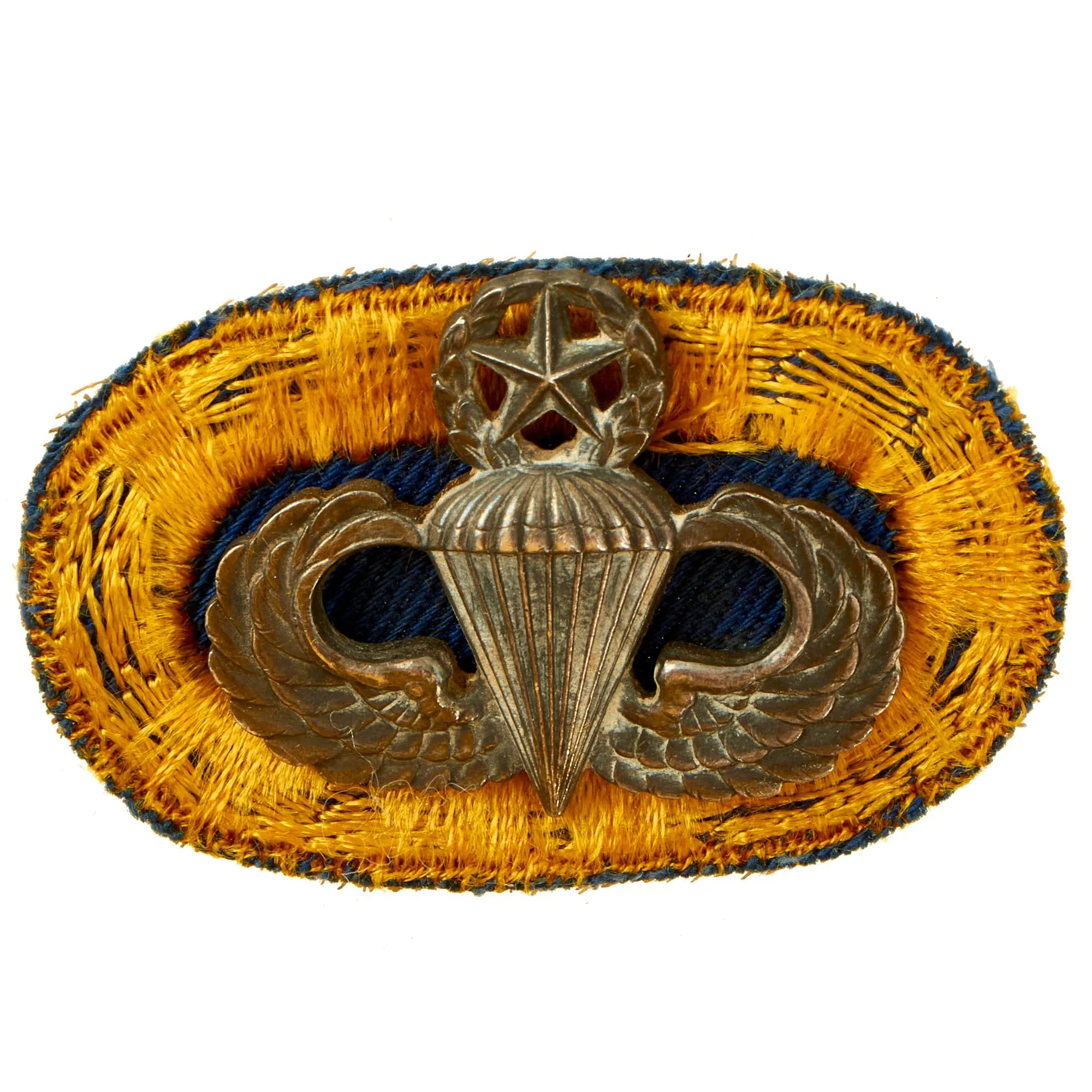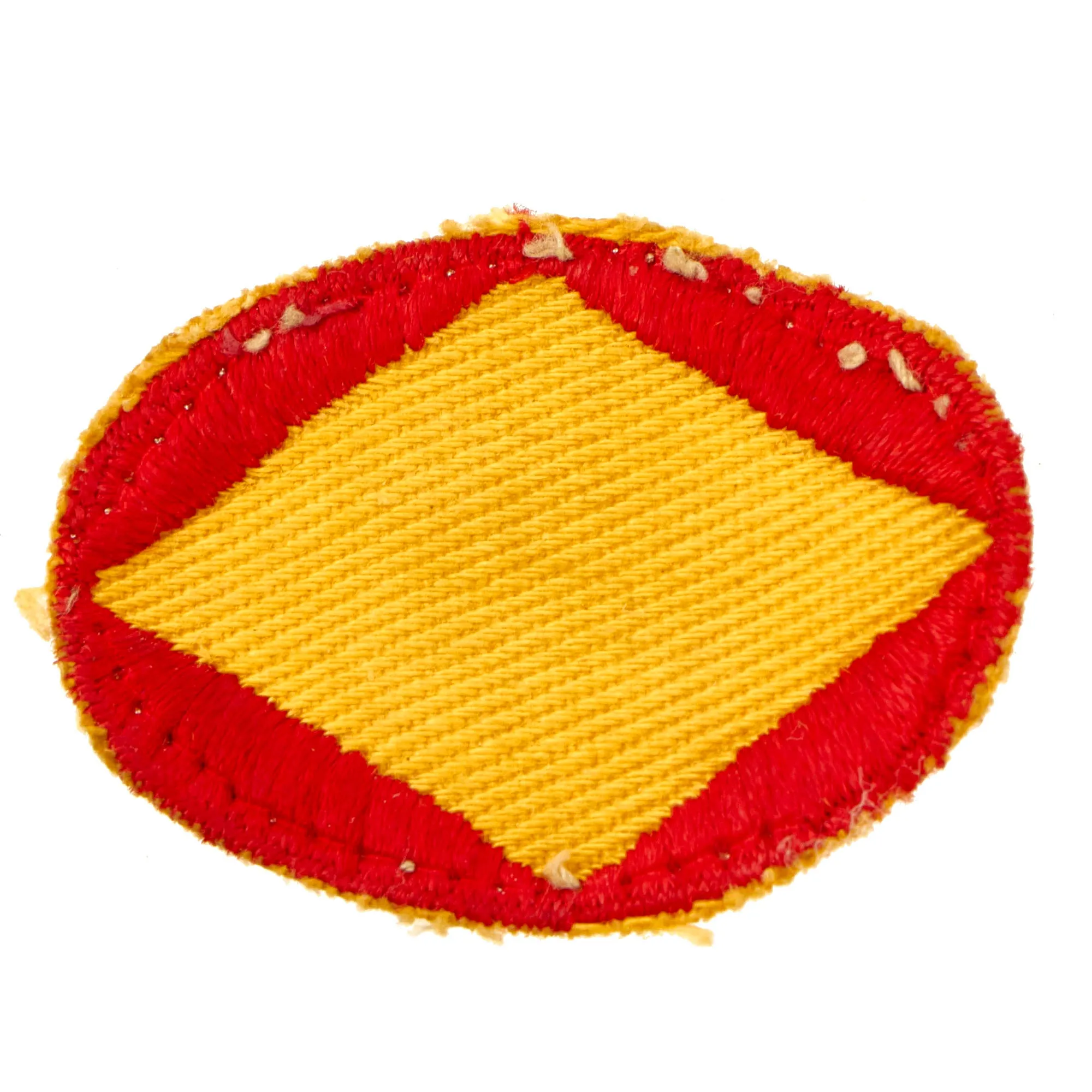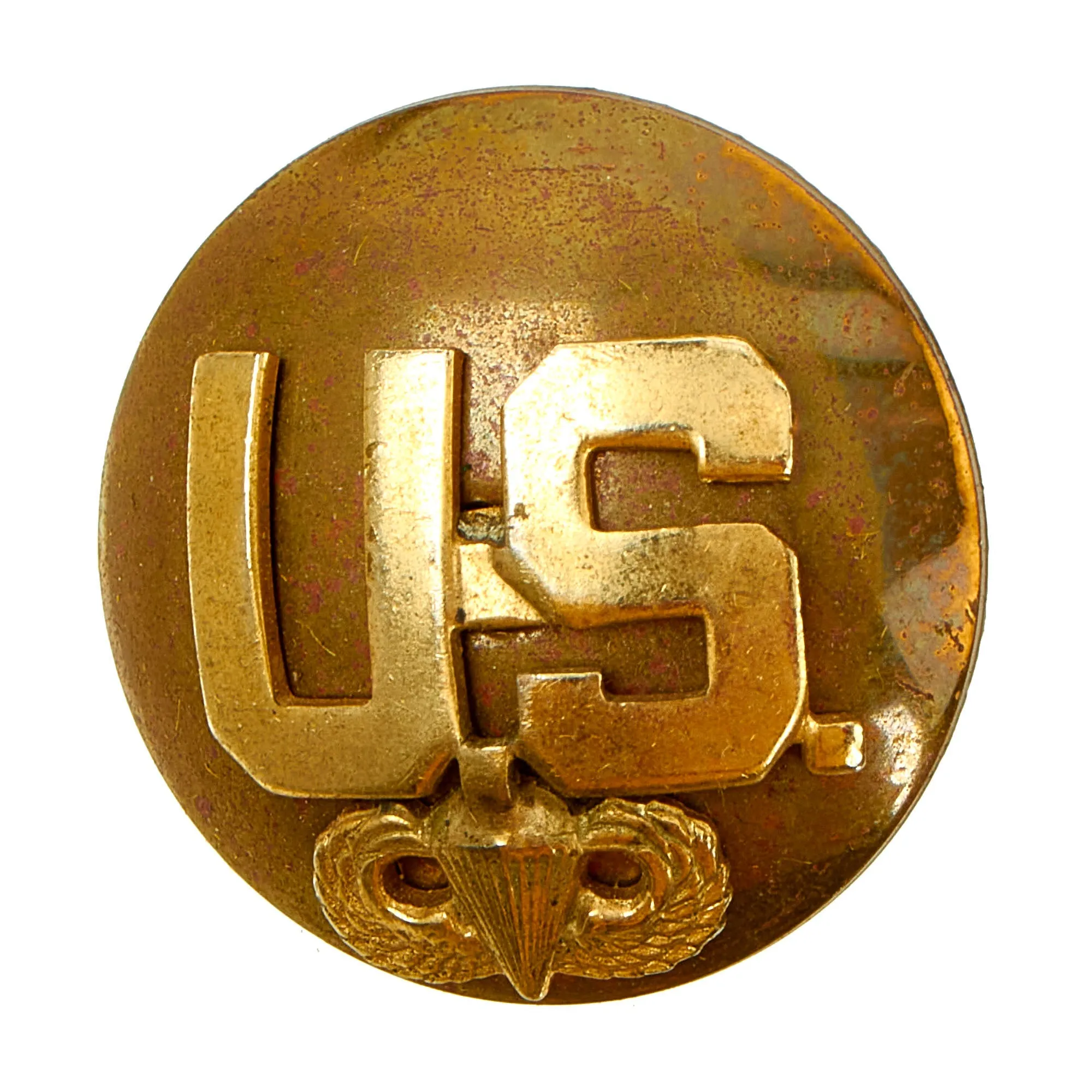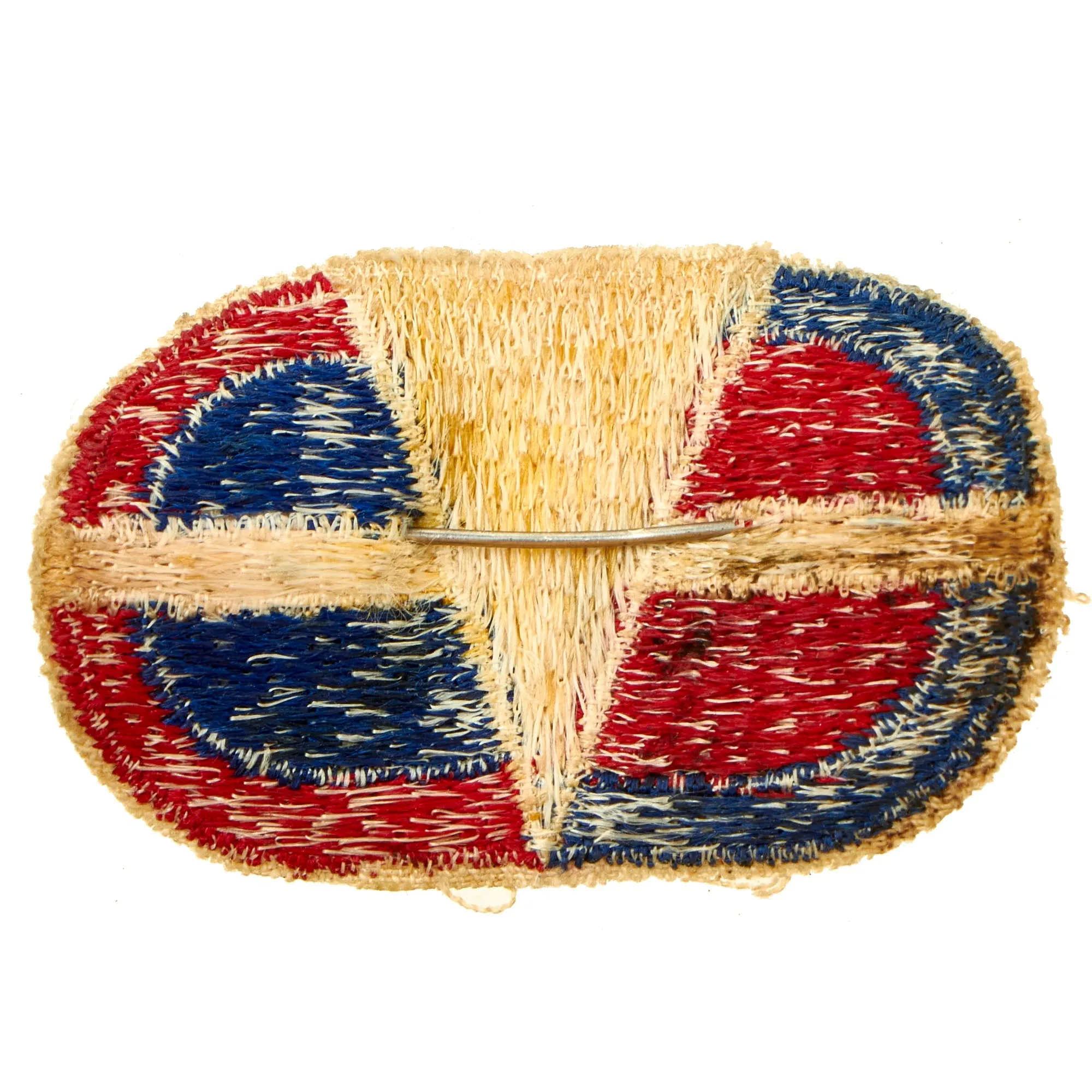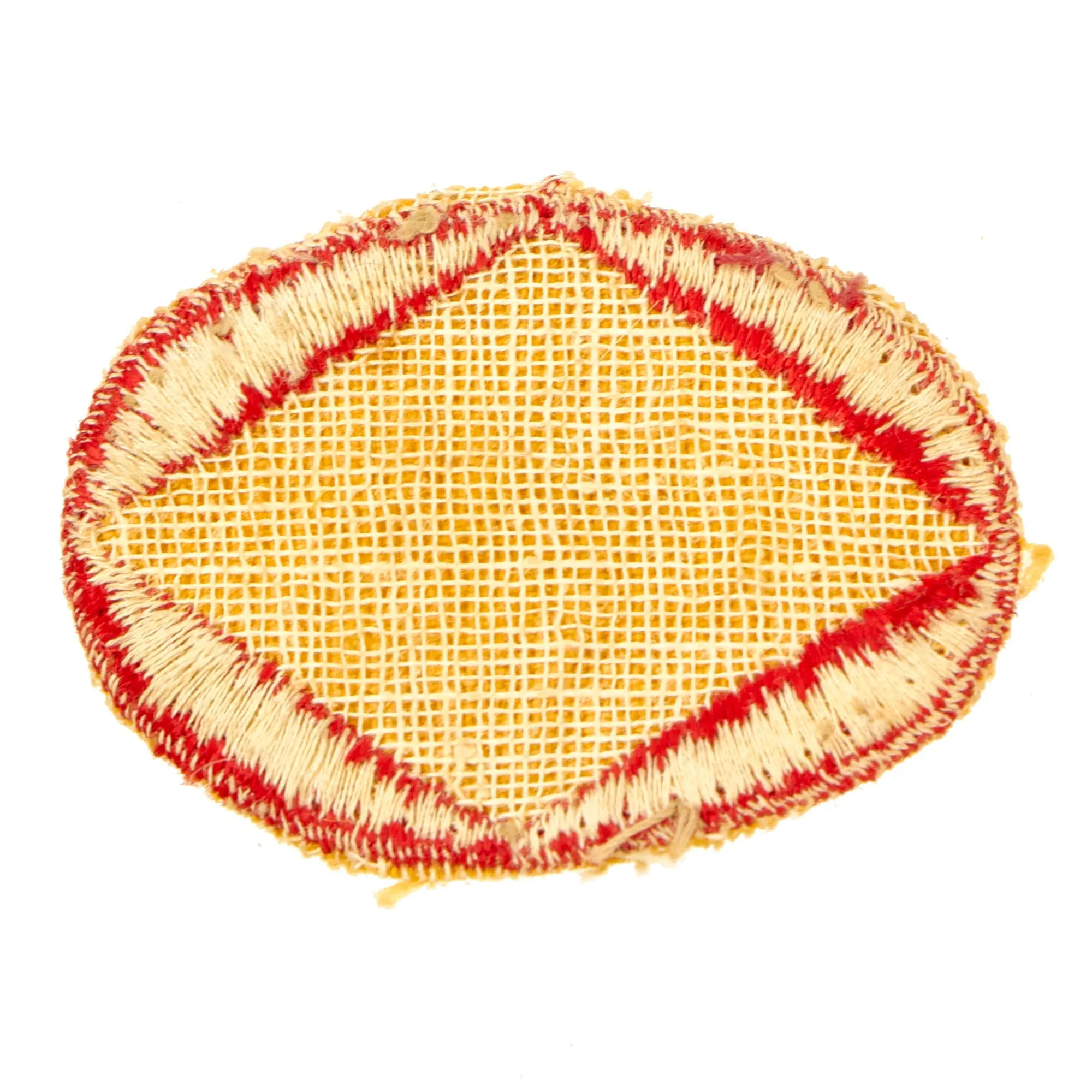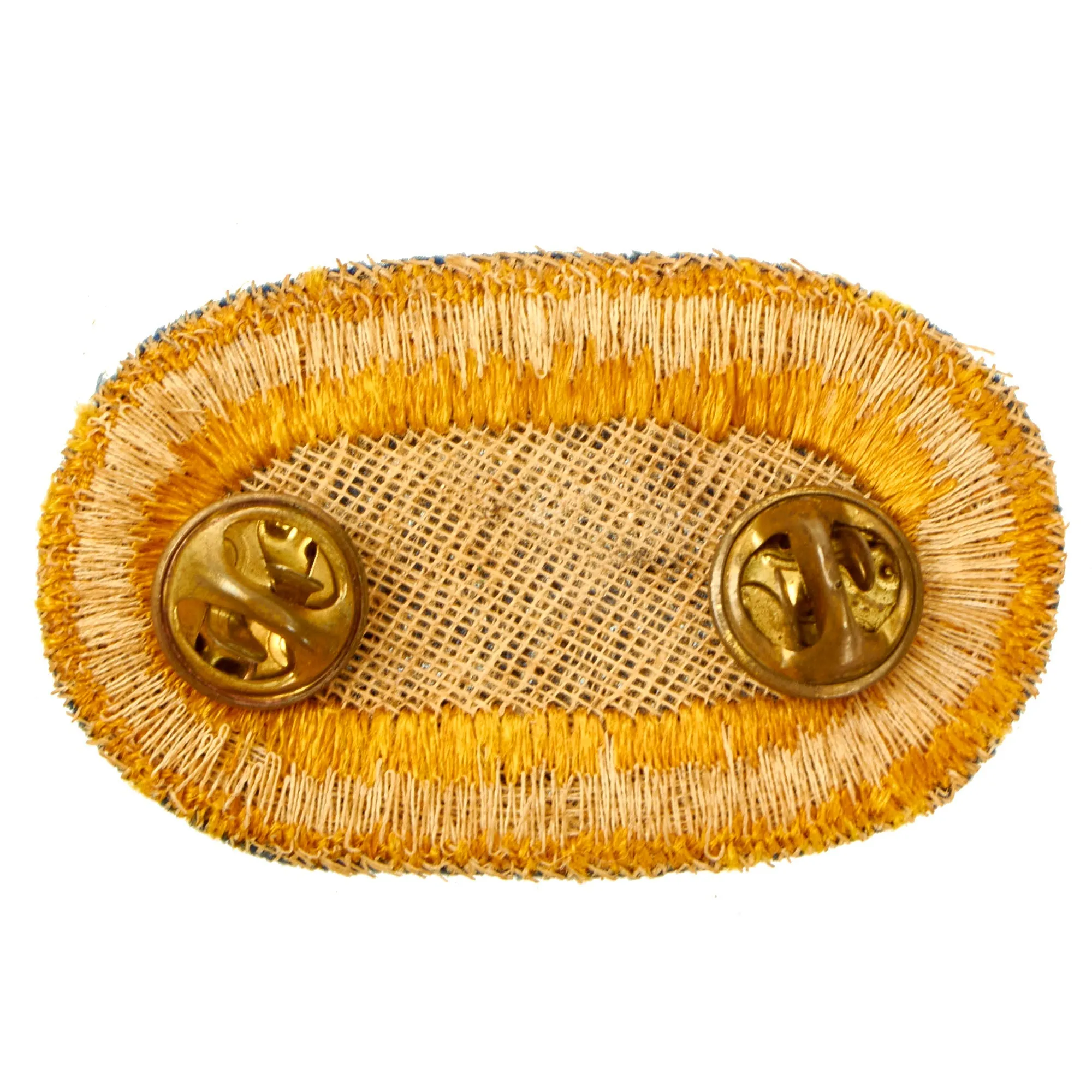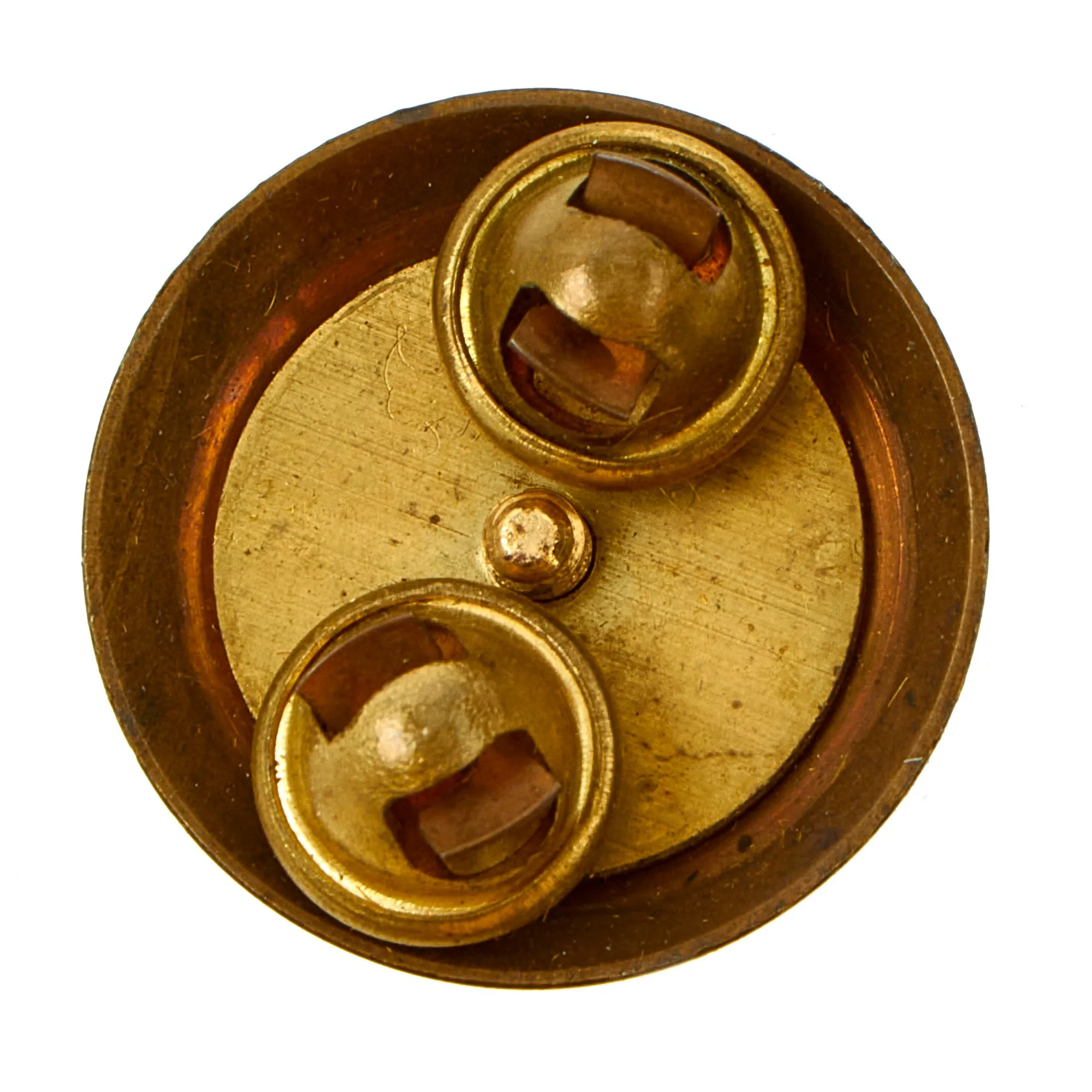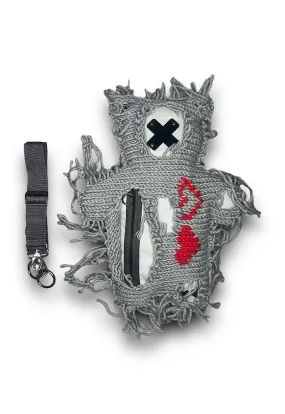Original Items: Only One Lot of 4 Available. Airborne forces are ground combat units carried by aircraft and air dropped into battle zones, typically by parachute drop or air assault. Parachute-qualified infantry and support personnel serving in airborne units are also known as paratroopers.
The main advantage of airborne forces is their ability to be deployed into combat zones without land passage, as long as the airspace is accessible. Formations of airborne forces are limited only by the number and size of their transport aircraft; a sizeable force can appear "out of the sky" behind enemy lines in merely hours if not minutes, an action known as vertical envelopment.
The Airborne Items In This Grouping:
- 504th Parachute Infantry Regiment Headquarters Oval With Master Parachutist Badge: To be eligible for the Master Parachutist Badge, an individual must have been rated excellent in character and efficiency and have met the following requirements:
- Participated in a minimum of 65 jumps including twenty-five jumps with combat equipment to consist of normal TOE equipment, including individual weapon carried by the individual in combat whether the jump was in actual or simulated combat. In cases of simulated combat the equipment will include water rations (actual or dummy), ammunition (actual or dummy), and other essential items necessary to sustain an individual in combat. Four night jumps must also be made during the hours of darkness, one as jumpmaster of a stick. Five mass tactical jumps must be made which culminate in an airborne assault problem with a unit equivalent to a battalion or larger; a separate company/battery; or an organic staff of regimental size or larger. The individual must fill a position commensurate with their rank or grade during the problem.
- Either graduated from the Jumpmaster Course of the Airborne Department of the Infantry School or the Jumpmaster School of a separate airborne battalion or larger airborne unit, or infantry divisions and separate infantry brigades containing organic airborne elements, including the U.S. Army Alaska Jumpmaster Course, or served as jumpmaster on one or more combat jumps or as jumpmaster on 33 noncombat jumps.
- Have served on jump status with an airborne unit or other organization authorized parachutists for a total of 36 months (may be non-consecutive).
The 25 combat equipment jumps necessary to qualify for the Master Parachutist Badge must be from a static line.
The master parachutist badge is 1 1⁄2 inches (38 mm) wide at the widest part of the wings and 1 13⁄64 inches (31 mm) from the top of the wreath to the bottom of the parachute where the risers meet in a point.
The 504th Infantry Regiment, originally the 504th Parachute Infantry Regiment (504th PIR), is an airborne forces regiment of the United States Army, part of the 82nd Airborne Division, with a long and distinguished history. The regiment was first formed in mid-1942 during World War II as part of the 82nd Airborne Division and saw service in Sicily, Italy, Anzio, the Netherlands, Belgium and Germany.
A parent regiment under the United States Army Regimental System, two battalions from the regiment, 1st Battalion (1-504 PIR) and 2nd Battalion (2-504 PIR), are currently active, both assigned to the 1st Brigade Combat Team, 82nd Airborne Division.
- 30th Engineer Battalion (Airborne) Oval With Parachutist Badge: The 30th Engineer Battalion (Topographic) (Airborne) conducted geospatial engineering missions in support of XVIII Corps, Third Army, and other Major and Unified Commands as directed from home station or upon deployment to any theater of the world. It would, on order, assume oversight of all geospatial assets in the Theater of Operations and direct their integrated employment. The Battalion's mission essential task list included: Conducting deployment operations, conducting force protection operations, conducting sustainment operations, conducting survey operations, conducting terrain analysis operations, conducting map production operations, commanding and controlling geospatial operations, and maintaining a theater database.
The 30th Engineer Battalion was activated in 1939 as an engineering base topographic battalion. During World War II, the Battalion deployed to North Africa, where it earned the Meritorious Unit Citation for combat action in Algeria. After a brief stay in the continental United States, the unit deployed to Hawaii in 1944, where it provided the Tenth US Army with topographic support and earned its second unit citation. After "V-J Day," the Battalion moved to the Presidio of San Francisco, where it was reorganized as the 30th Engineer Group (Topographic Survey). The unit mapped and surveyed Alaska and the Pacific Islands with aircraft and boat detachments.
- Post WWII 187th Field Artillery Oval (No Badge): On 16 September 1940, the 14th Infantry Regiment, less its 3rd Battalion, was redesignated as the 187th Field Artillery and inducted into Federal service the following February 3rd. It was subsequently reorganized and redesignated as the 187th Field Artillery Battalion on 8 February 1943, and as separate battalion it would go on to take part in five campaigns in the European-African-Middle Eastern Theater during World War II, receiving a Citation in the Order of the Day of the Belgian Army for its actions during the Battle of the Bulge.
Following the war, the unit was redesignated as the 187th Field Artillery Observation Battalion and ordered into Federal service on 3 September 1950; in October 1953 it would be redesignated again as the 187th Field Artillery Battalion. In all, the Battalion took part in nine Korean War campaigns before it was released from active Federal service in December 1954 and reverted to state control, with Federal recognition withdrawn from the unit at the same time.
- Post WWII “U.S.” Collar Device With Jump Wings: This would have been worn on a dress uniform. We have not been able to locate any information on this type of example, making for a wonderful research opportunity.
All items come more than ready for further research and display.




